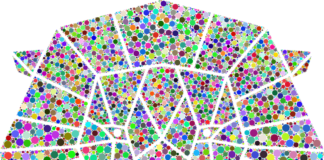Wearable technology, often referred to as wearables, represents a fascinating intersection of fashion and technology that has transformed the way we live, work, and interact with the world around us. In this comprehensive exploration, we delve into the multifaceted realm of wearable technology, tracing its origins, examining its current applications, and speculating on its future implications. Wearable technology, abbreviated as wearables, refers to a class of electronic devices that can be worn as accessories, implanted in the body, or even integrated into clothing and textiles. These devices are designed to collect and process data, provide real-time feedback, and enhance the user’s experience in various aspects of life.
The concept of wearables is not a recent innovation but has evolved over several decades. The earliest instances of wearable technology can be traced back to the development of the wristwatch. With its primary function of telling time, the wristwatch was a simple yet revolutionary wearable that liberated individuals from carrying cumbersome pocket watches or relying on stationary clocks. This innovation not only served a practical purpose but also introduced the idea of adorning technology as an accessory.
The evolution of wearable technology continued with the advent of calculators that could be worn as wristwatches, marking a step toward functionality beyond timekeeping. However, it wasn’t until the late 20th century and the early 21st century that wearable technology truly began to capture the imagination of inventors, entrepreneurs, and consumers alike.
The emergence of miniaturized electronic components, improved battery technologies, and advancements in materials science laid the foundation for the development of more sophisticated wearables. Initially, these devices were focused on fitness tracking, with sensors to monitor steps taken, heart rate, and sleep patterns. They provided users with valuable health and wellness insights, motivating them to lead healthier lifestyles.
As wearable technology evolved, its applications expanded into various domains. The introduction of smartwatches brought computing power to the wrist, allowing users to receive notifications, access apps, and even make calls without reaching for their smartphones. This convergence of fashion and functionality made wearables more appealing to a broader audience.
Beyond wrist-worn devices, wearable technology has infiltrated our clothing and accessories. Smart glasses, for example, overlay digital information onto the user’s field of view, enhancing tasks from navigation to augmented reality gaming. Smart clothing incorporates sensors and conductive textiles to monitor vital signs, track posture, or even adjust temperature based on environmental conditions. These innovations have the potential to reshape industries such as healthcare, sports, and fashion.
In the realm of healthcare, wearables have made significant contributions. Continuous monitoring of vital signs through wearable devices enables early detection of health issues, allowing for timely interventions. For individuals with chronic conditions, wearables offer a lifeline, providing data that can be shared with healthcare professionals for remote monitoring and management.
In the world of sports and fitness, wearables have become indispensable tools for athletes and enthusiasts. From GPS-enabled fitness trackers that map runs and hikes to smart garments that analyze biomechanics, these devices help users optimize their performance and prevent injuries. Wearable technology has democratized access to performance data, making it available to all levels of athletes.
The integration of artificial intelligence and machine learning has further enhanced the capabilities of wearables. These technologies enable wearables to analyze data in real time, adapt to user preferences, and even predict future behavior. For instance, smartwatches can learn a user’s exercise habits and offer personalized workout recommendations, while virtual assistants embedded in wearables provide voice-activated assistance.
The intersection of fashion and technology has given rise to a new breed of wearables known as “fashion tech.” These devices blend cutting-edge technology with aesthetics, allowing wearers to make a statement while enjoying the benefits of advanced functionality. From designer smart rings to customizable smart jewelry, fashion tech wearables cater to individuals who seek both style and substance.
The future of wearable technology holds limitless possibilities. As technology continues to advance, wearables are likely to become even more integrated into our daily lives. They may facilitate seamless communication, improve healthcare outcomes, enhance productivity, and offer new forms of entertainment and immersion.
In conclusion, wearable technology, often abbreviated as wearables, represents a captivating fusion of fashion and technology that has evolved from humble beginnings into a transformative force in our lives. These devices, which can be worn as accessories, integrated into clothing, or even implanted in the body, have redefined how we monitor our health, interact with information, and express our personal style. As the march of innovation continues, the future of wearables promises to be both exciting and transformative, opening new horizons in the realm of technology and fashion.
Wearable technology has sparked a paradigm shift in the way we perceive and interact with our physical surroundings. It goes beyond the functionality it offers and has profound implications for our society, culture, and even our understanding of the self.
In the realm of societal impact, wearable technology is reshaping our expectations of privacy. As these devices collect and transmit personal data, questions about data ownership, consent, and security have come to the forefront. It challenges us to rethink the boundaries between public and private spaces and the trade-offs we make for the convenience and connectivity that wearables provide.
Moreover, wearable technology has the potential to revolutionize the healthcare landscape. While we often associate wearables with fitness tracking and health monitoring, their impact goes far beyond that. Wearable devices can collect real-time health data, enabling early detection of diseases and providing valuable information to medical professionals. Remote patient monitoring, made possible by wearables, has the potential to reduce healthcare costs and improve patient outcomes.
Wearable technology also intersects with the concept of the quantified self—a movement that encourages individuals to track and analyze various aspects of their lives, from physical activity to sleep patterns. By providing detailed insights into our behaviors and habits, wearables empower us to make informed decisions about our well-being. However, this quantification of the self raises philosophical questions about whether we risk reducing our identities to a collection of data points.
In the realm of culture and self-expression, wearables offer a new canvas for creativity. Fashion designers and technologists are collaborating to create garments and accessories that blend seamlessly with technology. These fashion tech creations challenge our conventional notions of clothing and aesthetics. Wearers can use these pieces to express their personalities and affiliations in novel ways.
Wearable technology has also begun to influence art and entertainment. Immersive experiences, such as augmented and virtual reality, often rely on wearable devices to enhance the user’s sensory perception. These technologies redefine how we engage with narratives, visual art, and gaming. The lines between reality and virtuality blur, opening up exciting possibilities for storytelling and creativity.
On a broader scale, wearable technology contributes to the ongoing digitization of society. It accelerates the Internet of Things (IoT) ecosystem, where devices seamlessly communicate and share data. This interconnectedness has the potential to make our lives more efficient, from smart homes that adapt to our preferences to cities that optimize traffic flow based on real-time data from wearables and other IoT devices.
In education, wearable technology offers new avenues for immersive learning experiences. Students can use augmented reality headsets or smart glasses to explore historical sites or perform complex science experiments in virtual laboratories. This hands-on, experiential learning can enhance comprehension and engagement.
In the workplace, wearables can increase productivity and safety. Industrial workers, for example, can use augmented reality glasses to access real-time information and instructions, reducing errors and improving efficiency. Wearable technology is also a tool for telecommuting and remote collaboration, allowing professionals to connect with colleagues worldwide as if they were in the same room.
Wearable technology’s impact extends to the environment as well. Sensors embedded in wearables can monitor air quality, noise pollution, and other environmental factors. This data can be aggregated to provide insights into urban planning and environmental conservation efforts. Wearables, in this context, contribute to building smarter, more sustainable cities.
In conclusion, wearable technology transcends its key features to become a transformative force in our society, impacting our sense of privacy, healthcare, culture, self-expression, and even our understanding of the digital world. As it continues to evolve, it raises important ethical, philosophical, and societal questions that challenge us to strike a balance between innovation and responsibility. Wearable technology is not just about what we wear on our bodies; it’s about how we navigate an increasingly digital and interconnected world.
Societal Implications:
Wearable technology has ushered in a new era of societal transformation, influencing how we interact with one another, how businesses operate, and even how governments collect and use data. It has engendered discussions about ethics, privacy, and the boundaries of surveillance.
One significant societal shift is the way wearables are altering our social dynamics. As these devices become more integrated into our lives, they can serve as conversation starters and icebreakers. The uniqueness of a smartwatch or smart glasses can spark discussions, bridging generational and cultural gaps. Wearables also enable new forms of communication, from sending a heartbeat to a loved one through a smart ring to sharing real-time health data with healthcare professionals. These technologies can strengthen interpersonal relationships and promote connectivity.
However, the convenience of wearables also raises concerns about privacy and data security. As these devices collect a vast amount of personal information, including health data, location data, and biometrics, questions about who has access to this data and how it is used have become central. Wearables have prompted discussions about data ownership, consent, and the need for robust privacy regulations to protect users.
In addition to privacy concerns, wearable technology has the potential to exacerbate existing societal inequalities. Access to the latest wearables and the digital literacy required to use them effectively may not be evenly distributed. This digital divide can lead to disparities in health outcomes, education, and economic opportunities. Addressing these disparities is a critical societal challenge as wearables continue to proliferate.
Cultural Impact:
Wearable technology has also begun to reshape our cultural landscape, influencing art, fashion, and even the way we define ourselves in a digital age. It challenges traditional boundaries and opens new avenues for creativity and self-expression.
In the realm of art, wearables have become tools for artists to explore interactive and immersive experiences. Wearable art installations, often combining fashion with technology, invite viewers to engage with art in novel ways. These creations challenge the notion of passive observation and blur the lines between the creator and the audience.
Fashion tech, a burgeoning field, combines the worlds of fashion and technology. Designers and technologists collaborate to create garments and accessories that incorporate cutting-edge technology. Smart textiles and fabrics with embedded sensors can change color, texture, or shape in response to the wearer’s environment or biometric data. These innovations redefine our understanding of clothing as mere fabric and turn it into a dynamic canvas for self-expression.
Moreover, wearable technology is influencing how we perceive our own identities. The quantified self movement encourages individuals to track and analyze various aspects of their lives using wearables. This practice raises philosophical questions about whether we risk reducing our identities to a collection of data points. Are we defined by our heart rate, sleep patterns, and physical activity? Wearables challenge us to consider the implications of turning our bodies into data sources and the impact on our self-perception.
Everyday Integration:
In our daily lives, wearables are becoming seamlessly integrated into our routines, offering convenience, efficiency, and enhanced experiences. They are changing the way we work, communicate, and engage with the world around us.
In the workplace, wearables have the potential to revolutionize productivity and safety. Industrial workers can use augmented reality glasses to access real-time information and instructions, reducing errors and improving efficiency. Wearable technology is also enabling remote work and collaboration, bridging geographical distances and enhancing communication.
In education, wearables offer new possibilities for immersive learning experiences. Students can use augmented reality headsets or smart glasses to explore historical sites or conduct virtual experiments. This hands-on, experiential learning can enhance comprehension and engagement, making education more interactive and enjoyable.
Wearables are also redefining how we interact with our environment. Smart cities leverage wearable technology to collect data on air quality, noise pollution, and other environmental factors. This data informs urban planning and sustainability efforts, leading to cleaner, more livable cities.
In conclusion, wearable technology extends far beyond its key features to impact our society, culture, and daily lives. It raises essential questions about privacy, equity, and identity in a digital age. Wearables are transforming our social interactions, redefining fashion, and challenging us to consider the implications of quantifying the self. As they continue to evolve, wearables will play an increasingly significant role in shaping our future, offering both opportunities and challenges that will define the way we live, work, and connect with one another in the years to come.














